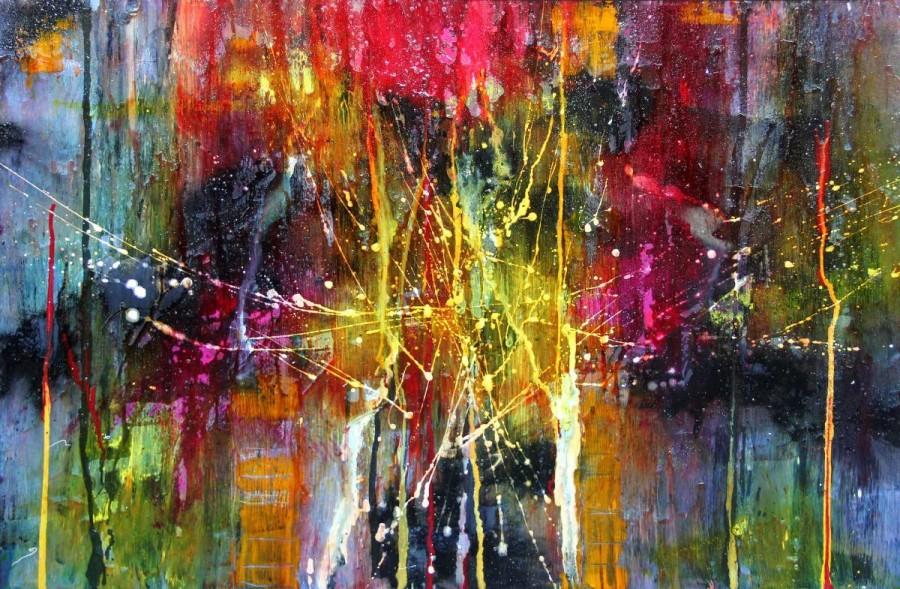What is art: a teenager perspective
“I participate in some sort of art everyday, and my life wouldn’t be the same without it,” said Krista Proksch(10). Coming off the stage of Portage Northern, she describes art as more than just the physical aspect of creativity. Like Proksch, teens view art through many different social, emotional and cultural aspects in life.
Digging into one’s culture, and self expression is art in the minds of some teens today. Often times people argue the true meaning of art. Although, according to Google, it literally means, “the expression or application of human creative skill and imagination.” Yet, the options are endless.
Some know art as more than just paintings on a canvas; “art is most likely music, or maybe paintings, but people nowadays don’t think of that as art,” said Sean Mcgee(12). Frequently people find art through the design of a picture, building, or possibly the structure of a book. Teens believe music or theater play a major part in the artistic side of life, especially during the process of growing up. “Music and theater are important to me because when I was younger, my grandma took me to see many musicals and from then on, I’ve always been interested in them,” said Proksch. Music represents art through the stylistics of lyrics, band techniques and vocal skills.
Some view art as the emotional side of a person. “Art is any kind of expression, like an emotion,” said Nicholas Crocker(12). According to Cathy Malchiodi, author of The Art Therapy Sourcebook, writes, “a modality for self-understanding, emotional change and personal growth.” This statement describes that one does not necessarily have to focus on the images and structure on the outside, but inside. In fact, starting a personal relationship with art in any form will build emotion toward the piece or style itself, and lower one’s stress level, by creating an outlet of some sort. “Art is a creative outlet for anyone, and it is expressed in many different ways,” said Erin Sullivan(10).
Furthermore, some think that art is a form of emotion or inspiration because it is not necessarily existent. “Art is very emotional, seeing a good play, or a painting can really connect with someone on a deeper level than the real world,” said Proksch.
Sometimes people stereotype art because it’s “weird” or “different.” According to Clara Lieu, (a Visual Artist & Adjunct Professor at RISD ), “I think the issue is not that people aren’t exposed to visual art enough, rather it’s that frequently they aren’t given the opportunity to see what’s really involved in the process of being an artist.”
Some believe that art is definitely given as an opportunity at our schools, but not many young students take advantage of it, due to minimal respect, appreciation, or attention. “Our art department has a lot to offer for kids, but not everyone appreciates art the same,” said Heather Canenguez, a Spanish teacher at Portage Northern. On the contrary, “I think a lot of people are involved in some sort of art form, here at Portage Northern, yet it’s overrated to in the minds of certain people. I just don’t think people take enough time to respect art itself,” said Proksch.
Culture is embarked amongst many people, and some ponder that art represents what culture is today. “Culture is impacted by art because it really makes up the people in the world,” said Tashifa Fayyaz(11). Lesli Walsh, a graphic designer from Michigan said, “Through art, we gain a better understanding of cultures in the past, but it also gives us insight into various cultures of present day.” Teens everywhere seek different ways of creating, and understanding art. Derived through culture, and emotion, art is depicted within and around. “In general, it is important to have a little bit of art in everyday life,” said Proksch.
A to D Glossary (styles/forms)
Abstract~ Looks as if there is no or little resemblance to real world
Baroque~ describes a fairly complex idiom, originating in Rome, which flowered during the period c.1590-1720, and which embraced painting, and sculpture as well as architecture.
Conceptual Art~involved in the work take precedence over traditional aesthetic and material concerns.
Digital Art~involved in the work take precedence over traditional aesthetic and material concerns.




